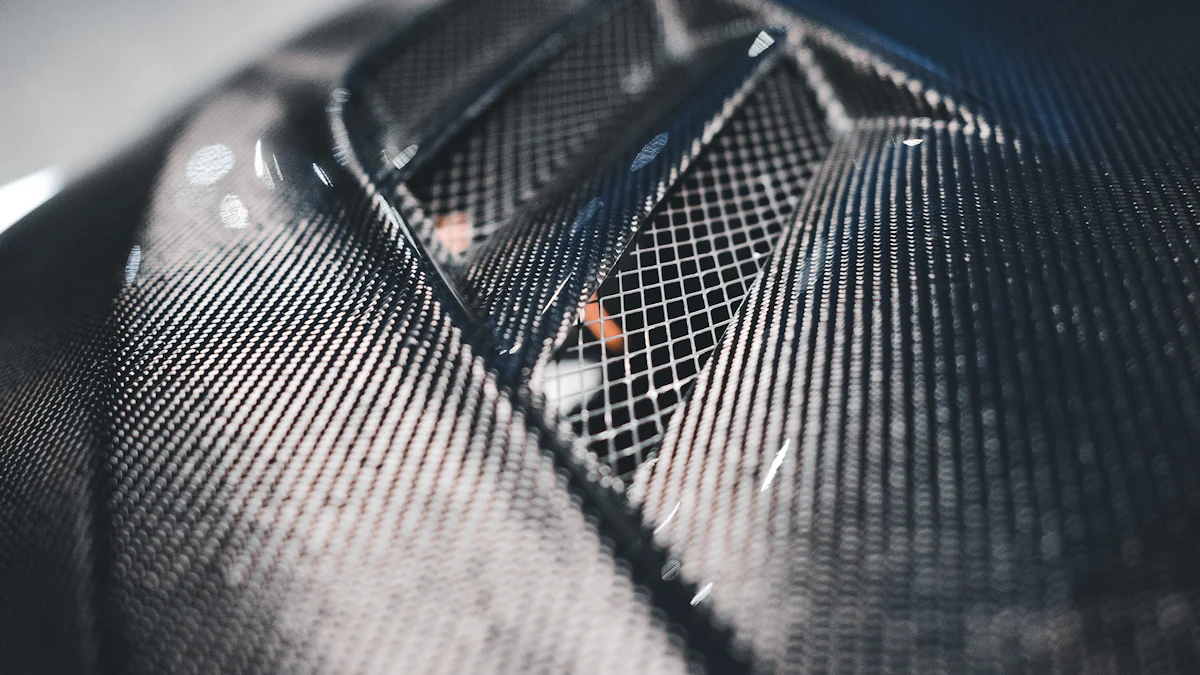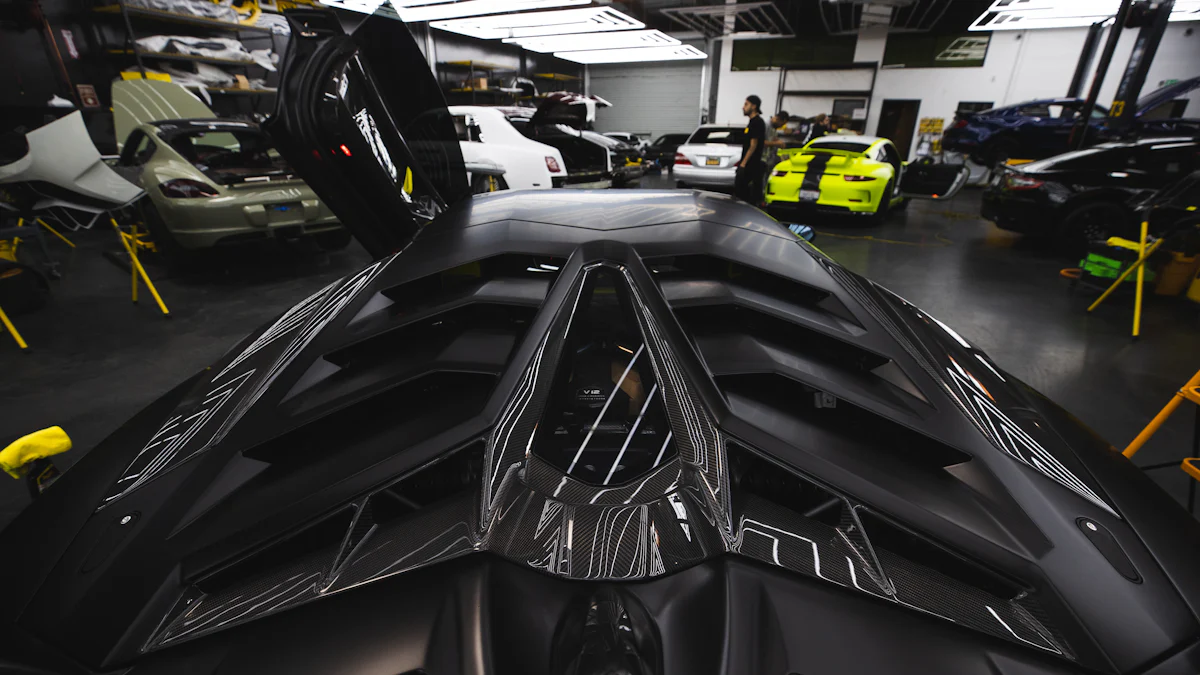The Hidden Science of Aston Martin Carbon Fiber

You might wonder how luxury vehicles achieve their perfect balance of strength and elegance. Aston Martin carbon fiber holds the answer. This advanced material combines lightweight properties with exceptional durability, transforming how vehicles perform and look. Engineers craft it using carbon atoms and polymer resins, creating a structure that enhances both safety and speed. Its versatility allows for intricate design elements, giving each car a sleek, aerodynamic profile. By using carbon fiber, Aston Martin redefines innovation in automotive engineering, delivering unmatched performance and style.
Key Takeaways
Aston Martin uses carbon fiber to make strong and stylish cars.
Carbon fiber is light but very strong, helping cars go faster.
Special weaving and layering make carbon fiber tough and safe.
It allows creative designs, improving both looks and function in cars.
Carbon fiber production aims to recycle and protect the environment.
What is Carbon Fiber?
Composition and Structure
Carbon atoms and polymer resins
Carbon fiber begins with carbon atoms. These atoms bond together in long chains, forming a structure that is both strong and stable. Manufacturers combine these chains with polymer resins to create a composite material. The resin acts as a binding agent, holding the carbon fibers together. This combination results in a material that is lightweight yet incredibly durable. You might think of it as a perfect partnership where each component enhances the other’s properties.
The weaving process for enhanced strength
The strength of carbon fiber comes from its unique weaving process. Engineers arrange the fibers into patterns, such as twill or plain weave, to maximize durability. These patterns distribute stress evenly across the material, preventing weak points. Layers of woven carbon fiber are then stacked and bonded with resin. This layering process creates a material that can withstand extreme forces while remaining lightweight. The result is a product that balances strength and flexibility, ideal for high-performance applications.
Key Properties
Lightweight and strong
One of the most remarkable features of carbon fiber is its ability to combine strength with a lightweight structure. It is five times stronger than steel but weighs significantly less. This makes it an excellent choice for industries where reducing weight is crucial, such as automotive design. By using carbon fiber, you can achieve better performance without sacrificing durability.
Heat and corrosion resistance
Carbon fiber also stands out for its resistance to heat and corrosion. Unlike metals, it does not rust or degrade when exposed to harsh environments. This property ensures that components made from carbon fiber maintain their integrity over time, even under extreme conditions.
Versatility in design
The versatility of carbon fiber allows for endless design possibilities. Its flexibility enables engineers to mold it into complex shapes, making it suitable for both structural and aesthetic purposes. Whether you need a sleek finish or a functional component, carbon fiber delivers unmatched adaptability.
Why Carbon Fiber Matters in Automotive Design
Lightweight Materials for Performance
Impact on speed and fuel efficiency
When you think about supercars, speed is often the first thing that comes to mind. Lightweight materials like carbon fiber play a crucial role in achieving this. By reducing the weight of a vehicle, engineers improve its power-to-weight ratio. This means the engine can deliver more performance without being burdened by unnecessary mass. As a result, you experience faster acceleration and higher top speeds. Additionally, reduced weight enhances fuel efficiency. A lighter car requires less energy to move, which translates to fewer stops at the pump and a more eco-friendly ride.
Enhanced handling and agility
Lightweight materials also improve handling and agility. With less weight pressing down on the tires, the car responds more quickly to your inputs. This makes cornering sharper and braking more precise. For high-performance driving, this level of control is essential. It allows you to feel connected to the road, enhancing your overall driving experience. Supercars rely on this balance of lightweight construction and responsive handling to deliver their signature thrill.
Strength and Durability
Crashworthiness and safety
While lightweight, carbon fiber does not compromise on strength. Its unique structure absorbs and distributes impact forces during a collision. This makes it an excellent choice for ensuring crashworthiness. You can trust that components made from carbon fiber will protect you in high-stress situations. Supercars prioritize safety alongside performance, and this material helps achieve both.
Longevity in extreme conditions
Supercars often face extreme conditions, from high speeds to intense heat. Carbon fiber excels in these environments. It resists wear and tear, maintaining its integrity over time. This durability ensures that your vehicle performs consistently, even under demanding circumstances. By choosing materials that last, manufacturers deliver improved performance and reliability.
Aesthetic and Functional Versatility
Sleek finishes for luxury vehicles
Supercar design is as much about aesthetics as it is about performance. Carbon fiber offers sleek finishes that enhance the visual appeal of luxury vehicles. Its smooth, glossy texture adds a modern, high-tech look. You’ll notice how it elevates the overall design, making each car a masterpiece.
Customization options
Carbon fiber also allows for extensive customization. Engineers can mold it into intricate shapes, enabling unique design elements. Whether you prefer bold accents or subtle details, this material provides endless possibilities. Supercars often feature personalized touches, and carbon fiber makes this level of exclusivity possible.
The Science Behind Aston Martin Carbon Fiber

Advanced Manufacturing Techniques
Weaving and layering processes
The manufacturing of carbon fiber involves precise weaving and layering techniques. Engineers arrange the fibers into intricate patterns, such as twill or plain weave, to enhance strength. These patterns distribute stress evenly, ensuring the material remains durable under pressure. Multiple layers of woven fibers are stacked strategically to create a lightweight yet robust structure. This process allows for the creation of components that balance strength and flexibility, essential for high-performance vehicles.
Resin infusion and curing methods
Resin infusion is another critical step in the production process. Engineers infuse the woven fibers with polymer resins, which act as a binding agent. This step ensures the fibers remain bonded, even under extreme conditions. After infusion, the material undergoes curing, where heat and pressure solidify the composite. This process results in a lightweight material with exceptional durability, ideal for innovative design and advanced aerodynamic elements.
Testing and Quality Assurance
Stress and durability testing
Every component undergoes rigorous stress testing to ensure it meets performance standards. Engineers simulate real-world conditions, such as high speeds and impacts, to evaluate durability. These tests confirm that the material can withstand extreme forces without compromising safety or performance.
Aerodynamic optimization
Aerodynamics plays a crucial role in vehicle performance. Engineers test each component to refine its aerodynamic profile. This process ensures the material contributes to reduced drag and improved handling. By optimizing aerodynamics, you experience better speed and control on the road.
Sustainability in Carbon Fiber Production
Recycling and reusing materials
Sustainability is a growing focus in carbon fiber production. Engineers explore methods to recycle and reuse materials, reducing waste. This approach aligns with the commitment to creating lightweight materials that are both high-performing and environmentally friendly.
Reducing environmental impact
Manufacturers also adopt groundbreaking technology to minimize the environmental impact of production. By using cutting-edge technology, they reduce energy consumption and emissions. This ensures that the production process supports sustainability without compromising performance or innovative design.
Real-World Applications in Aston Martin Vehicles

Structural Components
Carbon fiber chassis and monocoque designs
You’ll find carbon fiber at the heart of vehicle construction. Engineers use it to create chassis and monocoque designs that are both strong and lightweight. These structures form the backbone of the car, providing stability while reducing overall weight. This approach enhances performance by improving speed and agility. The lightweight materials also contribute to better fuel efficiency, making the vehicle more eco-friendly.
Reinforced interiors for safety
Inside the car, carbon fiber plays a critical role in safety. Reinforced interiors use this material to absorb impact forces during collisions. This ensures that you remain protected in high-stress situations. The combination of strength and lightweight properties makes it an ideal choice for creating a safe yet high-performing vehicle.
Performance Enhancements in the Aston Martin Valkyrie
Aerodynamic features like spoilers
The valkyrie showcases how carbon fiber transforms aerodynamics. Engineers design features like spoilers and diffusers using this material to reduce drag and increase downforce. These enhancements improve stability at high speeds, giving you better control on the road or track.
Weight reduction for high-speed performance
The valkyrie’s design prioritizes weight reduction. By using lightweight materials like carbon fiber, engineers achieve a power-to-weight ratio that maximizes speed and acceleration. This allows the valkyrie to deliver unmatched performance, making it one of the fastest vehicles in its class.
Aesthetic Features
Carbon fiber trims and accents
Carbon fiber isn’t just functional; it’s also visually stunning. You’ll notice trims and accents crafted from this material, adding a sleek, modern touch to the vehicle’s design. These elements enhance the car’s luxury appeal, making it stand out on the road.
Custom finishes for exclusivity
Customization is another advantage of carbon fiber. Engineers can mold it into unique shapes and apply custom finishes. This gives you the opportunity to personalize your vehicle, ensuring it reflects your style. The valkyrie exemplifies this exclusivity, offering bespoke options that make each car truly one of a kind.
Carbon fiber defines automotive excellence by combining performance, safety, and aesthetics. You see its impact in every detail, from lightweight construction to sleek finishes. Advanced technologies and innovative applications ensure vehicles deliver unmatched driving experiences. This material allows engineers to craft a unique masterpiece that balances luxury with sustainability. By embracing carbon fiber, you witness a commitment to pushing boundaries in design and engineering.
